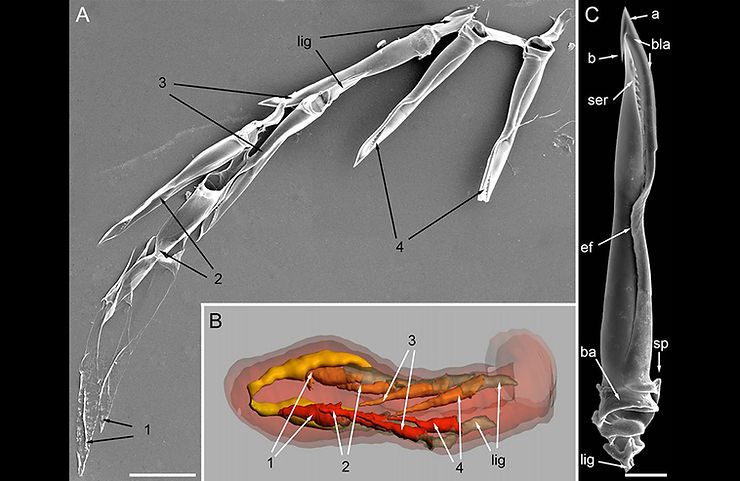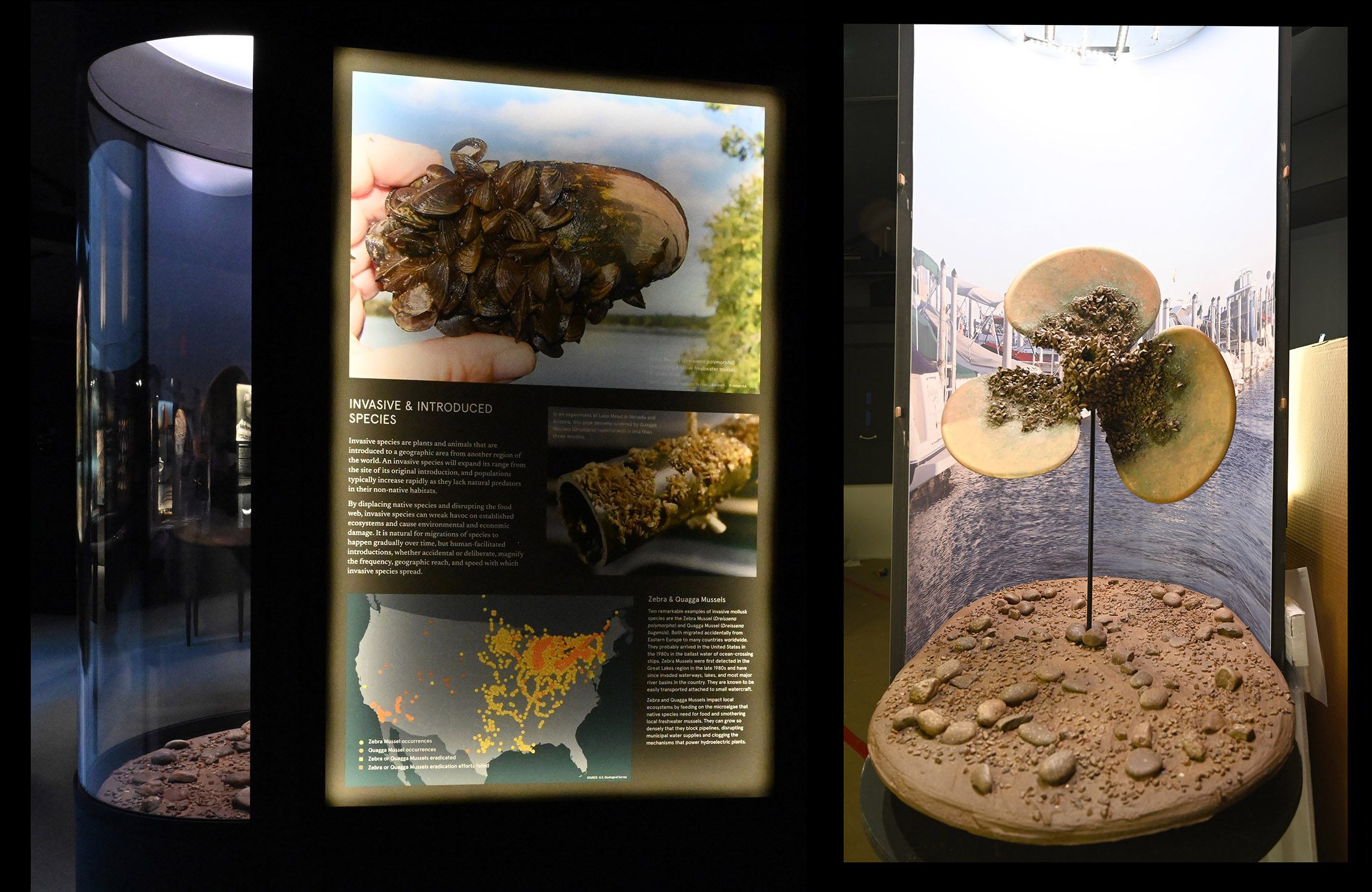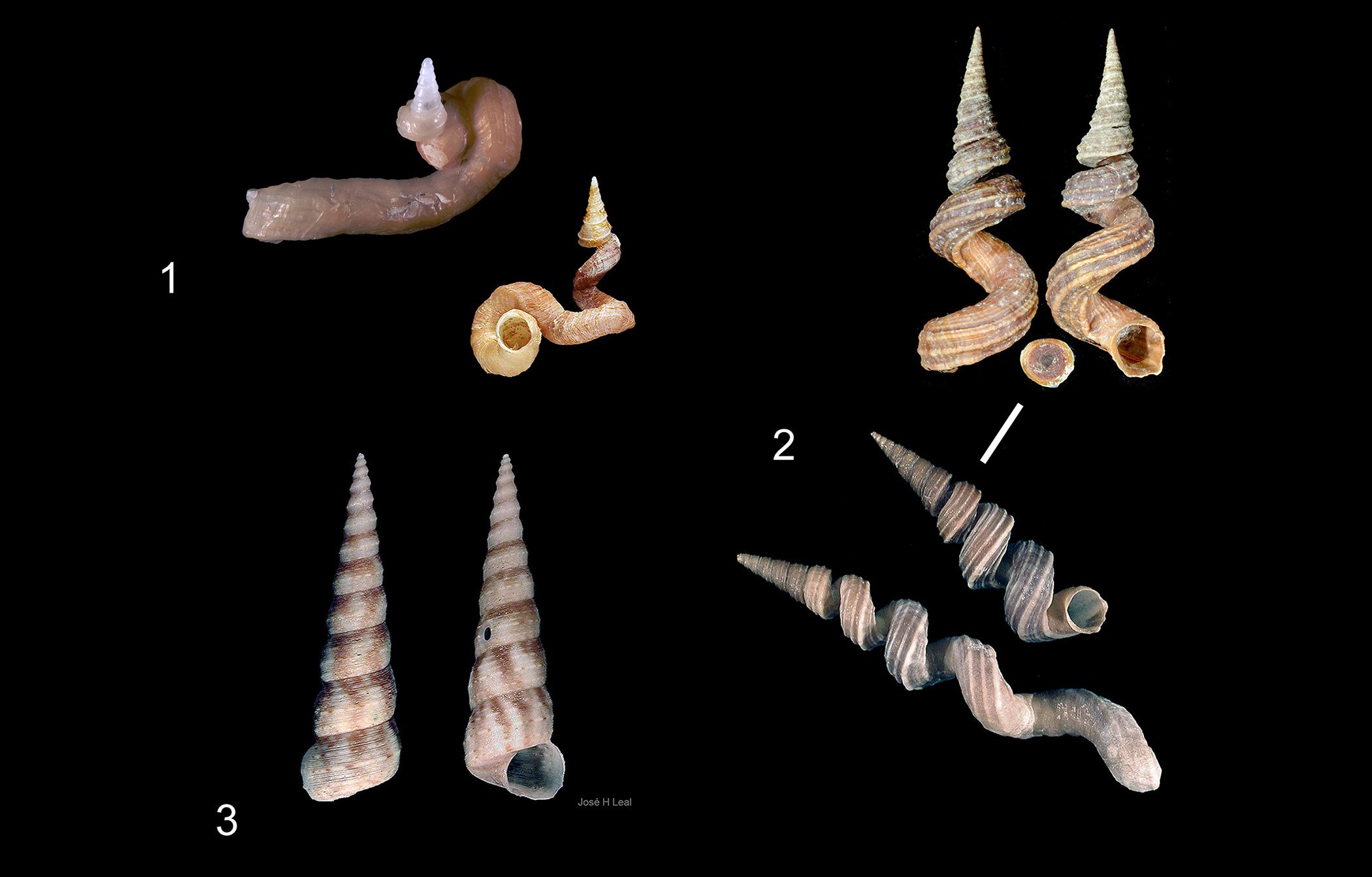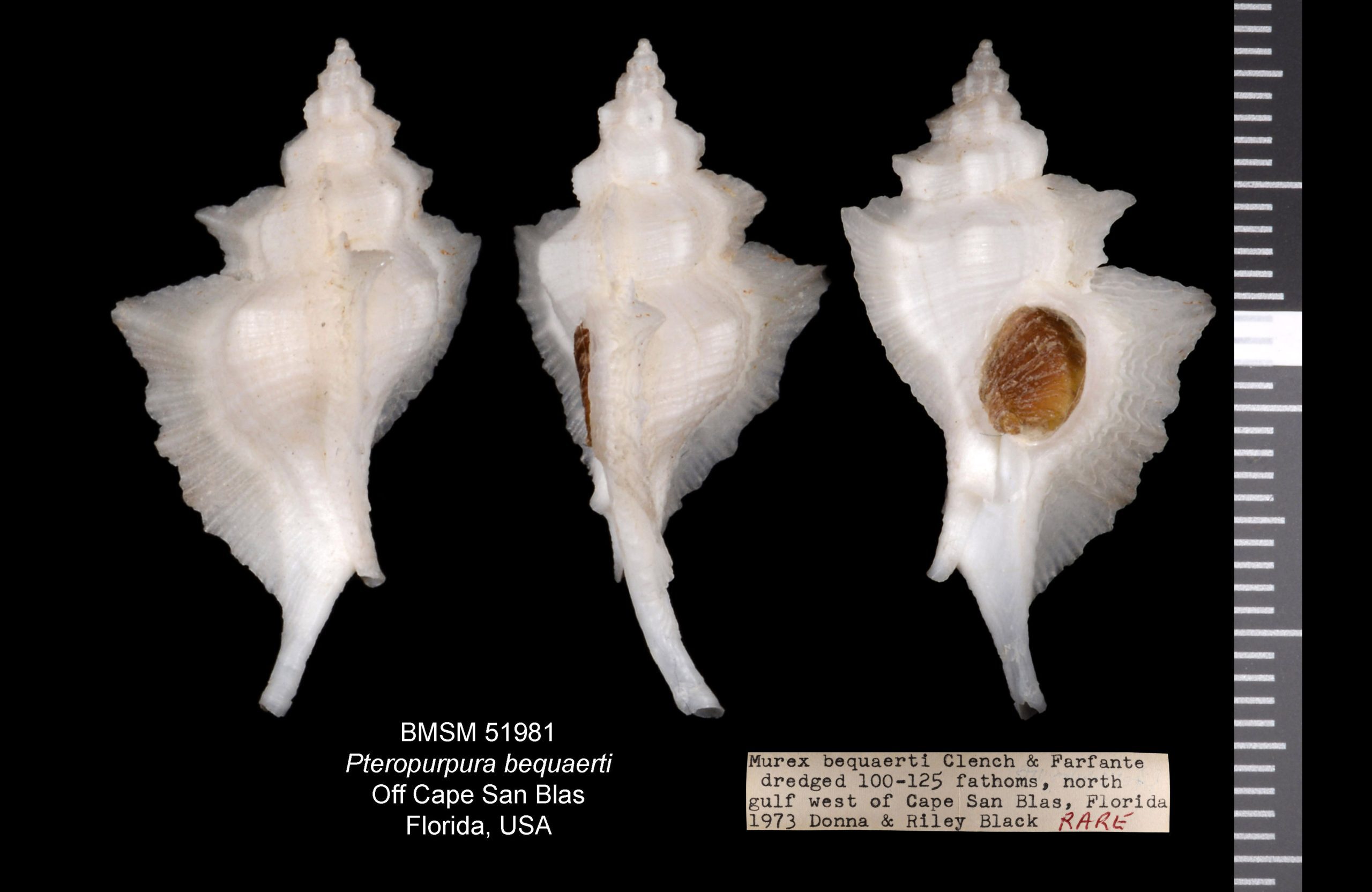Cone snails subdue and kill their prey using harpoon-like teeth that act as hypodermic needles that deliver potent “venom cocktails” to their prey. Each distinct species produces its own, particular cocktail of different toxins. After a strike, each toxin provokes a specific reaction on the prey animal. Worms, fishes, and other mollusks, are the preferred prey items of cone snails, with each cone snail species favoring prey belonging to just one of these categories and not the others. Cone snail teeth are hollow, capable of piercing the prey’s “skin,” and dispense toxins produced in a tubular, elongated venom gland. The toxins seep from the gland cells into the lumen, or hollow space within the tube, and are forced into the prey’s skin through the contractions of a venom bulb, which acts like the bulb of a turkey baster. The hypodermic teeth are part of the cone snail’s radula, a ribbon of teeth common to most mollusks. However, their harpoon-like and hollow shapes are very characteristic and distinctive from the radular teeth of other mollusks. In an article published this week in the Journal of Molluscan Studies, Elena Vortsepneva and Alexander Tzelin from Moscow University, and Yuri Kantor of the A.N. Severtsov Institute of Ecology and Evolution, also in Moscow, described the formation of the hypodermic teeth in the Flea-bearing Cone, Conus pulicarius Hwass in Bruguière, 1792. In their study, which includes sophisticated 3D-reconstruction techniques, the authors showed that the individual teeth start as thin, simple, plate-like structures that will gradually enroll longitudinally (think of someone rolling up a carpet) to form the hollow-cylindrical shape typical of cone snail teeth. Interested? Read the article here. I thank the authors for their permission to use Figure 3 of their article.
 Conus pulicarius, the radular structures. A. Newly formed hypodermic teeth; B. Radula sac; C. Individual hypodermic tooth. Used with permission from authors Vortsepneav, Tzelin, & Kantor.
Conus pulicarius, the radular structures. A. Newly formed hypodermic teeth; B. Radula sac; C. Individual hypodermic tooth. Used with permission from authors Vortsepneav, Tzelin, & Kantor.


